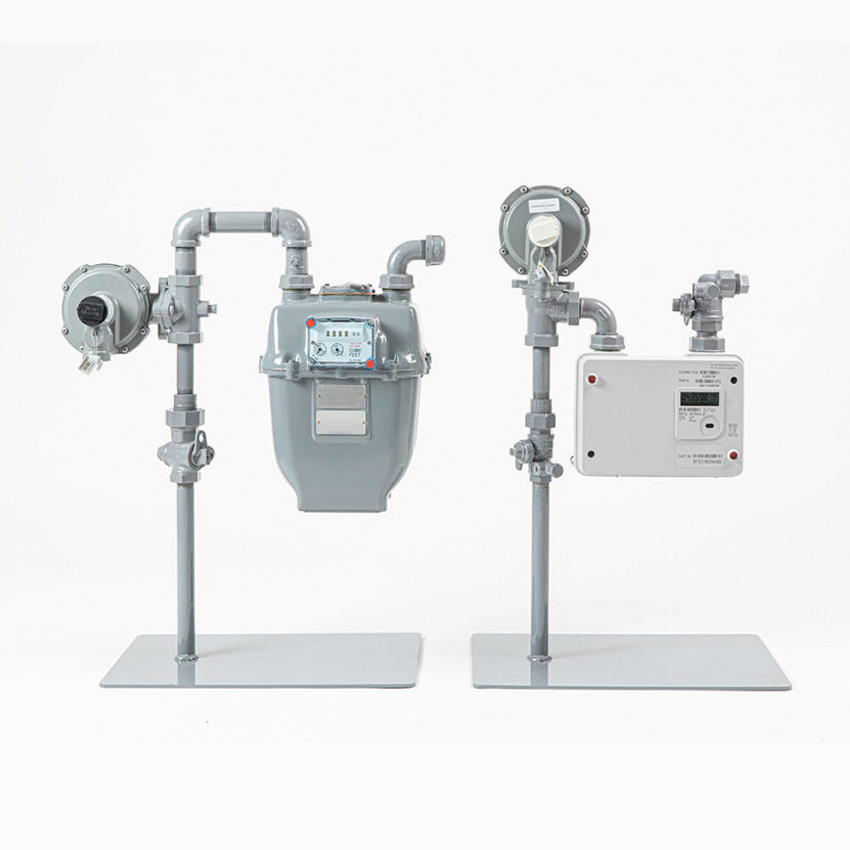Does your tank-based gas hot water heater need electricity to operate?
In the general sense, no, not really – the heating elements are fuelled by a non-electrical source. That being said, depending on the type of ignition system your water heater uses, you may be in trouble if a power outage were to affect your household.
Your gas water heater uses natural gas to fuel its heat exchanger, lighting a burner and heating a conductive element that transfers heat to the tank and the water. As long as the flame is active and fuel is going to the unit, no electricity is needed. This is an especially attractive feature of traditional tank-based models as in the case of a power outage, you will still have access to hot water and can even heat more when needed.
With tankless water heaters, a lack of electricity causes your water heating to turn off completely: even gas-fueled tankless models have countless interrelated electrical components like flow sensors, control panels, temperature gauges, pressure valves, and more. When one of those goes, the water heater usually cannot operate and you cannot heat water.
This being said, many gas water heaters still technically need electricity to fulfill one of their critical functions: lighting the burners that heat your water tank. An electric pilot light is one of the only necessary electrical components in a traditional tank-based gas water heater. A small spark from an electrical connection is what lights the gas entering the heat exchanger. Once the burners are on, the pilot light is no longer needed but without the pilot light, those burners stay off and gas floods the ignition chamber, causing a safety risk.
Thus, the main differentiator as to whether your tank-based water heater needs electricity or not is in the fuel ignition system your model uses.
There are two: standing pilot-controlled water heaters and electrical ignition water heaters. Let’s learn a little about each.
1. Standing pilot water heaters do not need electrical power
If you have a gas hot water heater that uses a non-electrical pilot light, you’re in luck in the event of a power outage. These units have a constantly-running flame (a pilot light) that is used to instantly ignite the burner when needed. The pilot light is not meant to go out but it occasionally can if cut off from fuel. This is no issue in a power outage however.
This small pilot flame is lit through piezoelectric components: this is a type of electrical charge that forms in solid materials like crystals and ceramics. By applying force to a piezoelectric material (like banging it into another piezoelectric thing), a small spark is created without the addition of extra electricity. The application of force usually comes from a button located in the body of the heater: much like many barbeques, pushing the button causes the piezoelectric crystals to smack into each other (causing that tick-tick-tick noise we know so well) until they create a spark and ignite the gas in the chamber. Just like that and without an electrical plug-in, you have live flame!
Standing pilot-controlled water heaters were more common with older models – many manufacturers are switching to electrical ignition for its dependence and energy efficiency (no constantly-running light). The main way to tell if your water heating unit is a standing pilot light is by inspecting the base of the unit. If you see a small burner, a temperature regulator, and a piezoelectric button, you very likely have a standing pilot model.
The good news is that if your power or the pilot light goes out, you can still manually (and carefully) turn on your water heater as long as it is connected to a gas line with fuel. Even if the piezoelectric button is malfunctioning you can manually light it with a match or a lighter. If the pilot light does not turn on after a few tries however, disconnect the unit from the gas and contact a specialist to avoid causing any gas buildup and fire risks.
2. Electrical ignition water heaters need electrical power
While the standing pilot light models do not require any electrical charge to ignite the gas burners of your water heater, electric-controlled ignition is a different story. These types of water heating units need a small amount of electricity to ignite their burners and without access to power, you will be unable to heat water.
These ignition systems were designed to be more energy-efficient given that they do not need to be on all the time like a standing pilot light. There are two: intermittent pilot ignition and hot surface ignition (HSI).
Intermittent pilot ignition is exactly what it sounds like: a small pilot light is lit every time the burners are activated and then turns off until it is needed again. Because it is inefficient to manually create a piezoelectric spark every time your unit’s heat exchanger turns on (you’d have to be going to your water heater all the time to push the button), this type of ignition depends on an electrical charge that creates sparks at the burners to light them.
Hot surface ignition works differently in the sense that it does not use a pilot light. Instead, electricity is pumped into a few resistance elements made of thermally-conductive materials like silicon nitride or silicon carbide. These materials will rapidly absorb heat and become glowing-hot in no time, igniting the burners on demand.
If your household is subject to frequent power outages, it is important to mention this to your trusted water heater technician when beginning the process of replacing your water heater. With that, you’ll be able to choose the best water heater for your home and its fuel availability. At Pink Plumbing we work with our clients at every step of the process to ensure your new water heater is catered uniquely to your home and your lifestyle.



